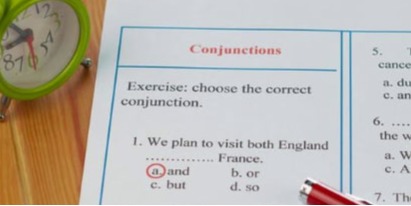Reading comprehension is a fundamental skill that plays a crucial role in a student's success in the PSLE English examination. Beyond just decoding words, comprehension involves understanding, interpreting, and engaging with written text. This article explores the importance of reading comprehension in the PSLE English paper and provides strategies to help your child develop this essential skill.
Understanding the PSLE English Paper
The PSLE English examination consists of several components, with reading comprehension forming a significant portion of the assessment. The comprehension section typically includes:
- Multiple-choice questions testing literal and inferential understanding
- Open-ended questions requiring students to interpret and analyze the text
- Vocabulary questions in context
- Questions on identifying main ideas and supporting details
- Questions on author's purpose and tone
Why Reading Comprehension Matters
Strong reading comprehension skills are important for several reasons:
- They form the foundation for success across all subjects, not just English
- They account for a significant portion of marks in the PSLE English paper
- They are transferable skills that benefit students throughout their academic journey
- They develop critical thinking and analytical abilities
- They enhance vocabulary acquisition and language development
Common Challenges in Reading Comprehension
Many students face challenges with reading comprehension, including:
- Limited vocabulary that hinders understanding of the text
- Difficulty distinguishing between main ideas and supporting details
- Struggles with inferential questions that require reading between the lines
- Problems maintaining focus while reading longer passages
- Difficulty understanding figurative language, idioms, and literary devices
- Challenges with time management during the examination
Strategies to Improve Reading Comprehension
1. Build a Strong Vocabulary Foundation
Vocabulary knowledge directly impacts comprehension ability:
- Encourage regular reading across various genres and topics
- Keep a vocabulary journal to record and review new words
- Teach word-attack skills for unfamiliar words (context clues, root words, prefixes, suffixes)
- Play word games and engage in word-rich activities
- Discuss the meanings of new words in everyday conversations
2. Develop Active Reading Habits
Active reading involves engaging with the text rather than passively consuming it:
- Teach previewing techniques (scanning titles, headings, and images before reading)
- Encourage questioning while reading (What is happening? Why? What might happen next?)
- Practice making predictions and confirming or adjusting them while reading
- Teach annotation strategies appropriate for your child's age
- Discuss the text during and after reading to reinforce understanding
3. Focus on Comprehension Strategies
Specific strategies can enhance understanding of texts:
- Visualization: Creating mental images of what is being described
- Summarization: Identifying and restating the main points
- Connection-making: Relating the text to personal experiences, other texts, or the world
- Questioning: Generating questions about the text before, during, and after reading
- Inferencing: Drawing conclusions based on clues in the text
4. Practice with Various Text Types
The PSLE may include different types of texts:
- Narrative texts (stories, personal recounts)
- Informational texts (articles, reports)
- Persuasive texts (advertisements, opinion pieces)
- Procedural texts (instructions, recipes)
- Visual texts (graphs, tables, diagrams)
Ensure your child has experience reading and analyzing each type.
5. Develop Answer Techniques
Teach specific techniques for answering comprehension questions:
- For multiple-choice questions: Eliminate obviously incorrect options first
- For open-ended questions: Use the RACE method (Restate the question, Answer the question, Cite evidence, Explain)
- For vocabulary questions: Consider the context before selecting a meaning
- For inferential questions: Look for clues in the text that support logical conclusions
Practical Activities to Enhance Reading Comprehension
Daily Reading Routine
Establish a consistent reading habit:
- Set aside 15-30 minutes daily for reading
- Provide access to a variety of reading materials
- Model reading by letting your child see you read regularly
- Discuss what you're both reading during family time
Guided Reading Discussions
Enhance understanding through conversation:
- Ask open-ended questions about the text
- Discuss characters' motivations and actions
- Explore themes and messages
- Make predictions about what might happen next
- Connect the text to real-life experiences
Comprehension Games and Activities
Make learning fun with these activities:
- Story mapping: Create visual representations of stories
- Summarization challenges: Summarize a paragraph in a limited number of words
- Question creation: Have your child create questions about the text
- Role-playing: Act out scenes to demonstrate understanding
- Text-to-movie comparisons: Compare written stories with their film adaptations
Conclusion
Reading comprehension is a complex skill that develops over time with consistent practice and guidance. By implementing these strategies and activities, you can help your child build strong comprehension skills that will not only benefit them in the PSLE English examination but also foster a lifelong love of reading and learning.
At BigSteps Tuition, our English language program emphasizes the development of robust reading comprehension skills through structured lessons and personalized guidance. Contact us to learn how we can help your child excel in PSLE English.
